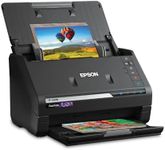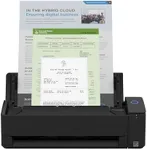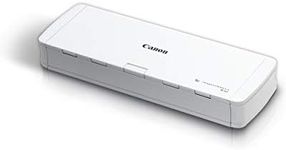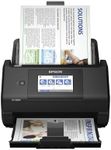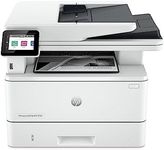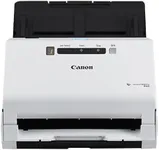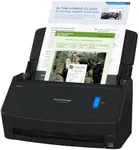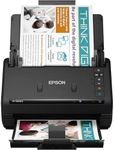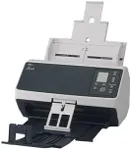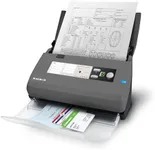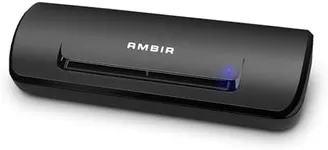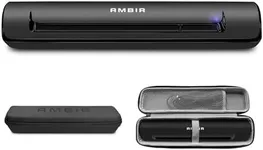Buying Guide for the Best Wireless Document Scanners
Choosing the right wireless document scanner can significantly improve your productivity and streamline your document management process. When selecting a scanner, it's important to consider various specifications that will impact its performance and suitability for your needs. Understanding these key specs will help you make an informed decision and ensure you get a scanner that fits your requirements perfectly.ResolutionResolution refers to the clarity and detail of the scanned images, measured in dots per inch (DPI). Higher resolution means better image quality, which is important if you need to scan detailed documents or images. For general document scanning, a resolution of 300 DPI is usually sufficient. If you need to scan photos or documents with fine details, consider a scanner with 600 DPI or higher. Choose a resolution based on the type of documents you will be scanning most frequently.
Scan SpeedScan speed indicates how quickly a scanner can process documents, usually measured in pages per minute (PPM). Faster scan speeds are beneficial if you need to scan large volumes of documents regularly. For occasional use or small batches, a speed of 15-20 PPM may be adequate. For high-volume scanning, look for scanners with speeds of 30 PPM or more. Consider your typical scanning workload to determine the appropriate scan speed for your needs.
ConnectivityConnectivity options determine how the scanner communicates with your devices. Wireless scanners typically offer Wi-Fi or Bluetooth connectivity, allowing you to scan documents directly to your computer, smartphone, or cloud storage without the need for cables. Ensure the scanner supports the wireless protocols compatible with your devices. If you need to scan documents to multiple devices or locations, look for scanners with versatile connectivity options.
Document Size and TypeDifferent scanners support various document sizes and types, from standard letter and legal sizes to business cards and receipts. Some scanners also handle thicker media like ID cards. Consider the types of documents you will be scanning most often. If you need to scan a variety of document sizes and types, choose a scanner with versatile media handling capabilities.
Automatic Document Feeder (ADF)An Automatic Document Feeder (ADF) allows you to load multiple pages into the scanner at once, which is useful for batch scanning. ADF capacity varies, with some scanners holding 20 pages and others up to 100 pages or more. If you frequently scan multi-page documents, an ADF can save you time and effort. Choose an ADF capacity that matches your typical scanning volume.
Duplex ScanningDuplex scanning refers to the ability to scan both sides of a document simultaneously. This feature is essential if you often scan double-sided documents, as it can significantly speed up the scanning process. If you primarily scan single-sided documents, duplex scanning may not be necessary. Consider your document types to decide if this feature is important for you.
Software and CompatibilityThe software that comes with the scanner can greatly affect its usability and functionality. Look for scanners that include robust software for document management, OCR (Optical Character Recognition), and easy integration with cloud services. Ensure the scanner is compatible with your operating system and any specific applications you use. Good software can enhance your scanning experience and improve productivity.
PortabilityPortability is an important factor if you need to use the scanner in different locations or on the go. Portable scanners are typically smaller and lighter, making them easy to carry. However, they may have fewer features compared to desktop models. If you need a scanner for travel or remote work, prioritize portability. For office use, a larger, more feature-rich scanner may be more suitable.
